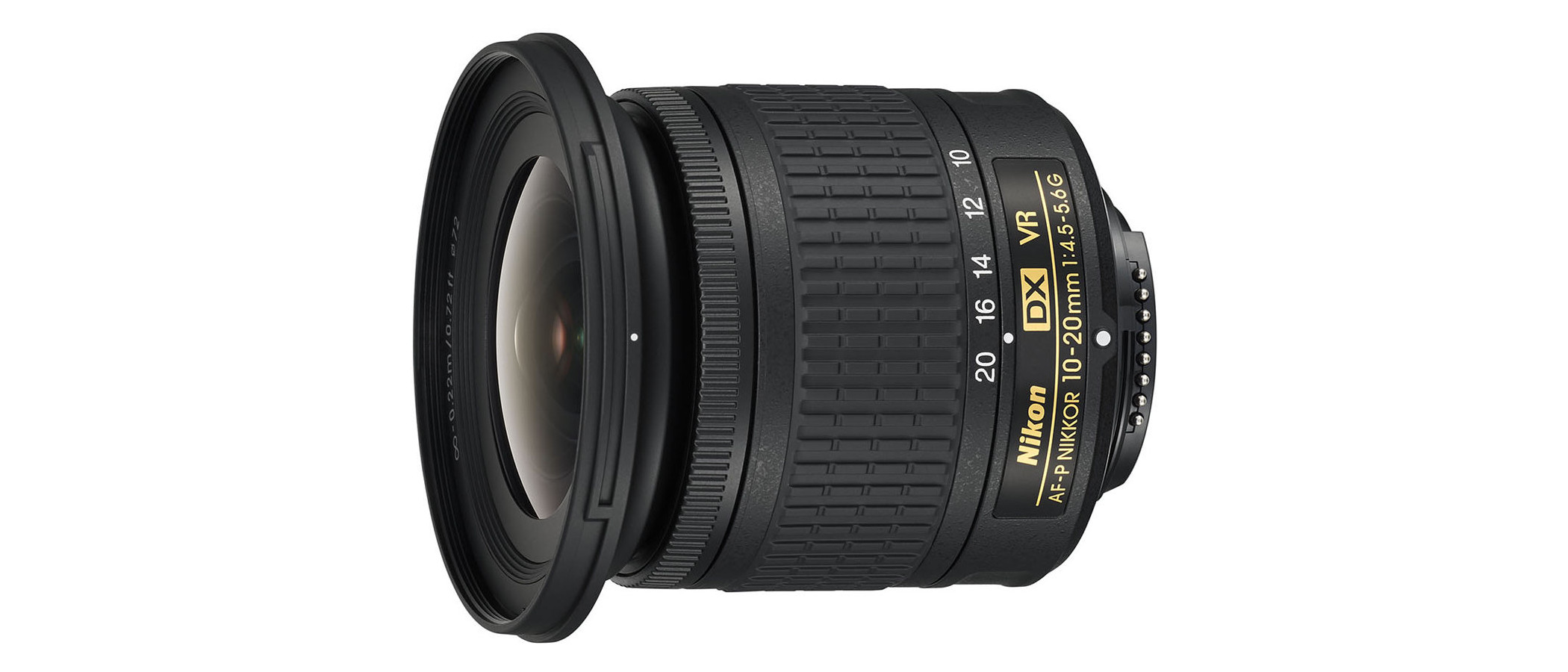Digital Camera World Verdict
You often have to pay big bucks for own-brand Nikkor lenses, but this wide-angle zoom for DX (APS-C) format cameras packs a big field of view into a compact, lightweight construction at a very attractive price. Optical image stabilization adds to the attraction, image quality is good on the whole and the stepping motor autofocus system is highly effective, although this makes the lens incompatible with some older Nikon DSLRs.
Pros
- +
Compact, lightweight and affordable
- +
Generous maximum viewing angle
- +
Optical image stabilization
Cons
- -
Corner-sharpness could be better
- -
No weather seals
- -
Plastic mounting plate
Why you can trust Digital Camera World
There’s a lot to be said for the Nikon AF-P DX 10-20mm f/4.5-5.6G VR as a ‘landscape’ lens. When the going gets tough and you’re clambering over tricky terrain, in pursuit of landscape photo opportunities, the last thing you need is a bag of heavyweight camera kit. This remarkably compact ultra-wide zooms weighs just 230g, employing a plastic rather than metal mounting plate, but it still packs in some useful features. Unlike Nikon’s older and heavier AF-S DX 10-24mm lenses, it adds 3.5-stop VR that can save a whole lot more weight, avoiding the need to lug a tripod around with you. It’s also a bonus when you’re shooting interiors under low lighting conditions, and even night-time cityscapes.
Specifications
Mount: Nikon F (DX)
Full-frame: No
Autofocus: Yes
Stabilization: Yes
Lens construction: 14 elements in 11 groups
Angle of view: 109-70 degrees
Diaphragm blades: 7
Minimum aperture: f/22-29
Minimum focusing distance: 0.22m
Maximum magnification ratio: 0.17x
Filter size: 72mm
Dimensions: 77x73mm
Weight: 230g
Key features
Autofocus is based on a stepping motor that gives quick performance for stills and smooth, near-silent transitions while shooting movies. As usual for this type of system, manual override and fully manual focusing are available via an electronically coupled focus ring. The downside is that neither autofocus nor manual focusing is available in some older Nikon DSLRs, including the D3000, D5000 and D7000.
Three aspherical elements are included in the optical path, which features 14 elements in total and Super Integrated Coating is applied to reduce ghosting and flare. Build quality feels fairly solid for such a lightweight lens and, unlike the similar Canon offering, the Nikon is supplied complete with a hood. A 72mm attachment thread enables the easy use of filters like ND Grads and circular polarizers.
Performance
Autofocus is quick and assured and VR (Vibration Reduction) lives up to its 3.5-stop billing. Centre-sharpness is very good even when shooting wide-open through most of the zoom range, only dropping off a little at the long end. Edge- and corner-sharpness is relatively uninspiring and a little poor at the 20mm. The lens is also a little lackluster in terms of color fringing and short-zoom distortion.
Lab results
We run a range of lab tests under controlled conditions, using the Imatest Master testing suite. Photos of test charts are taken across the range of apertures and zooms (where available), then analyzed for sharpness, distortion and chromatic aberrations.
We use Imatest SFR (spatial frequency response) charts and analysis software to plot lens resolution at the center of the image frame, corners and mid-point distances, across the range of aperture settings and, with zoom lenses, at four different focal lengths. The tests also measure distortion and color fringing (chromatic aberration).
Sharpness:
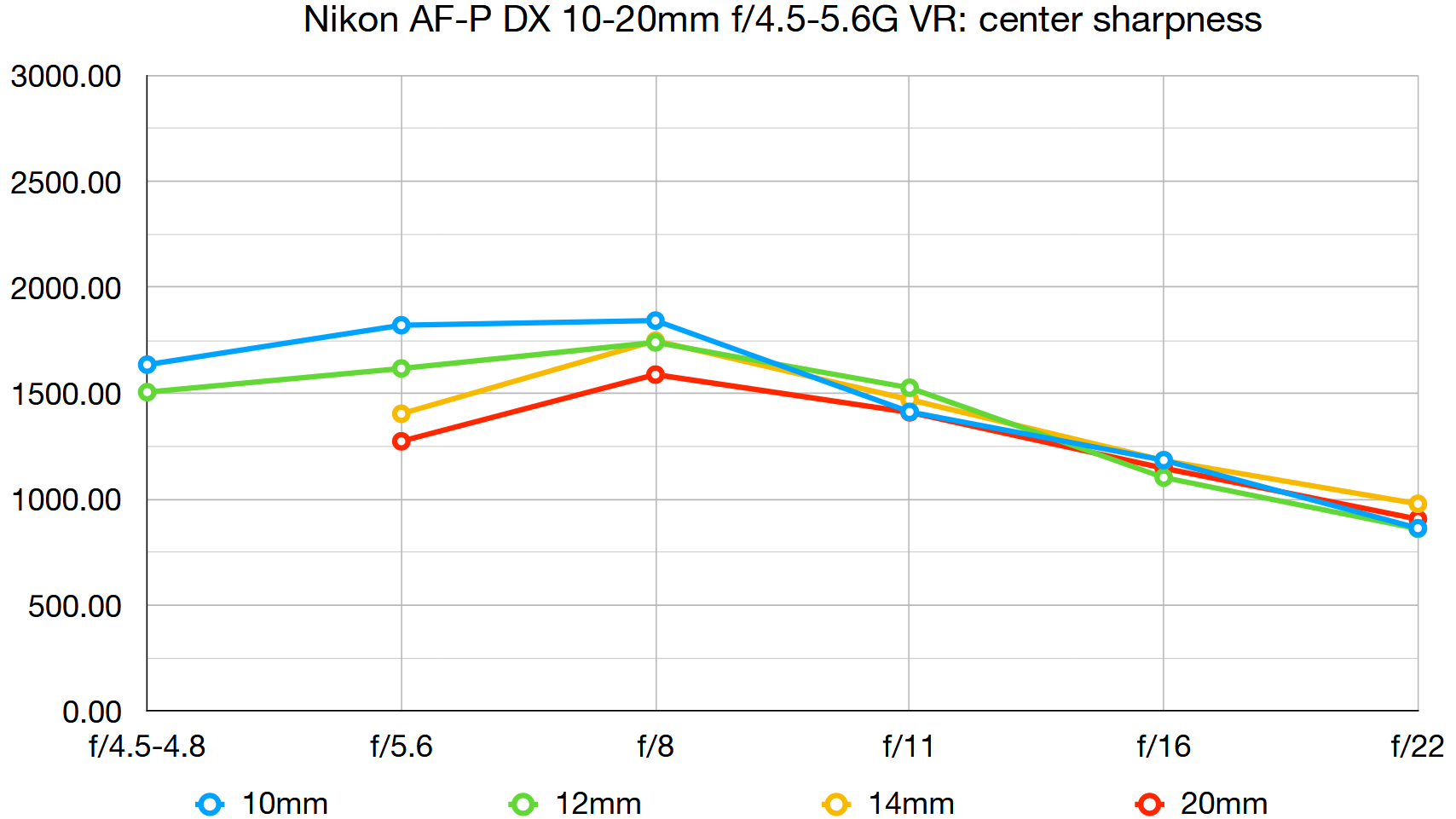
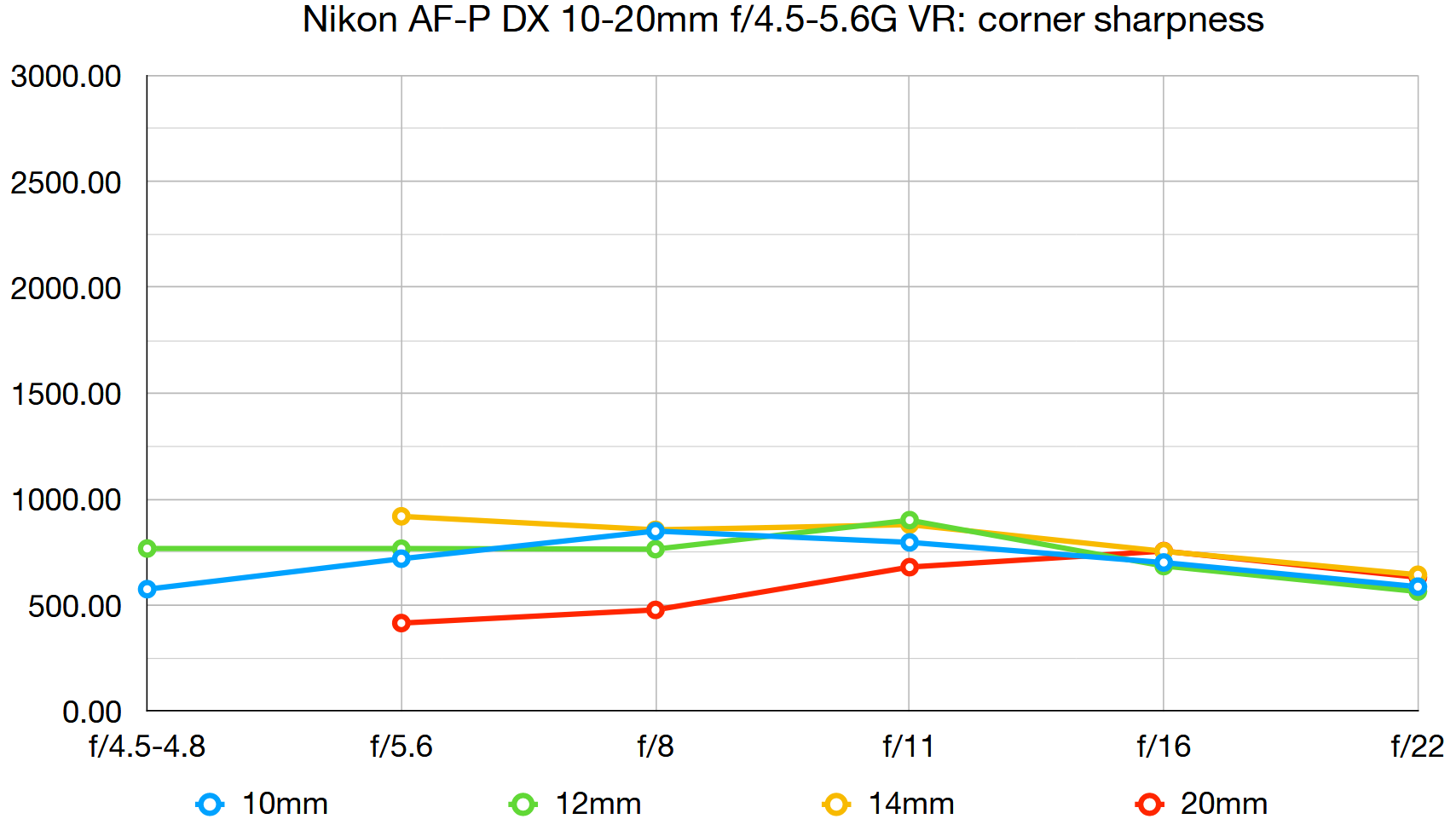
Sharpness is very good in the central region of the image frame, less so in the surrounding area and relatively poor towards the edges and corners.
Fringing:
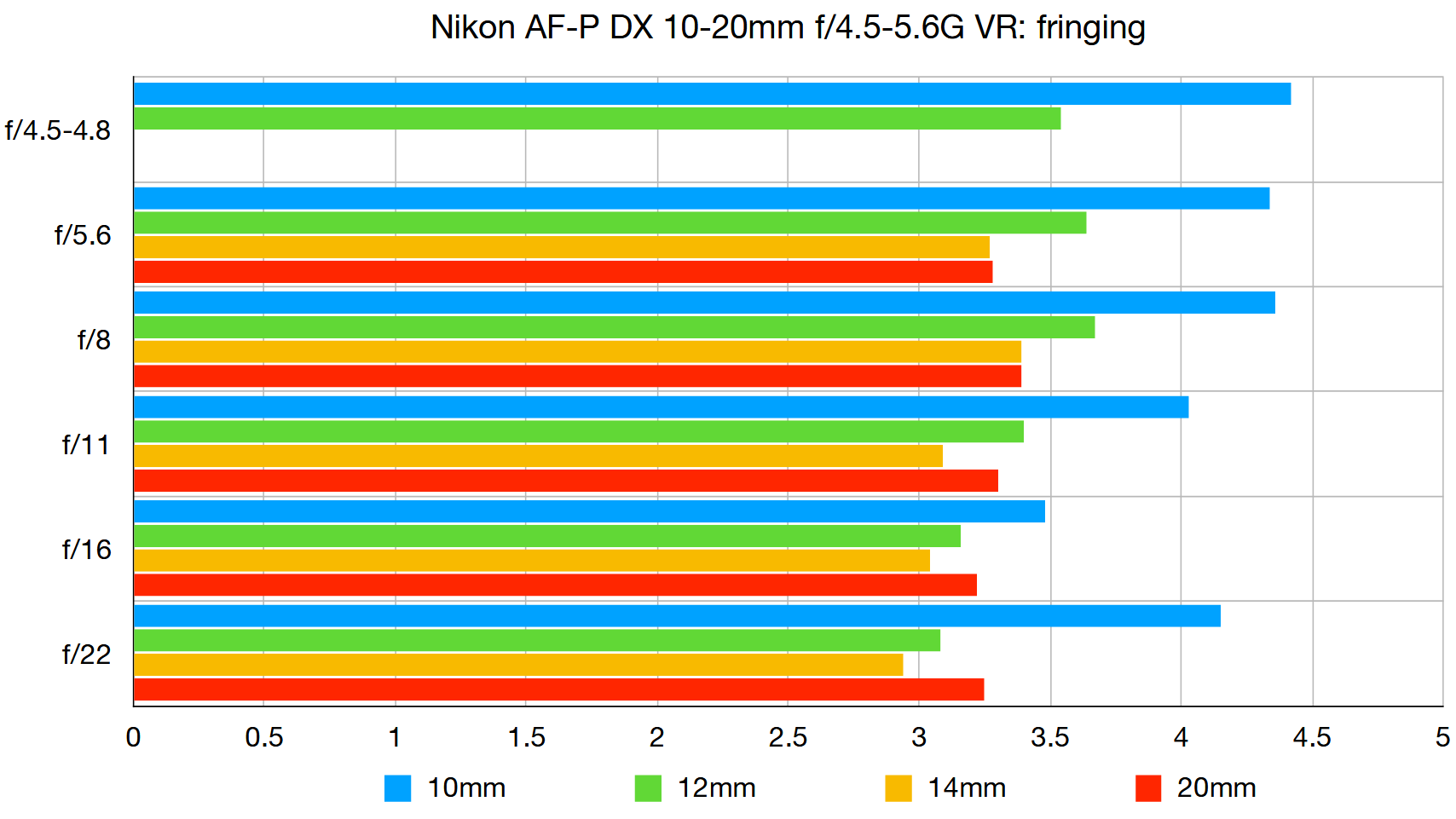
Color fringing can be quite noticeable away from the center of the frame, the lens relying quite heavily on the automatic in-camera correction of recent and current Nikon DSLRs.
Distortion:
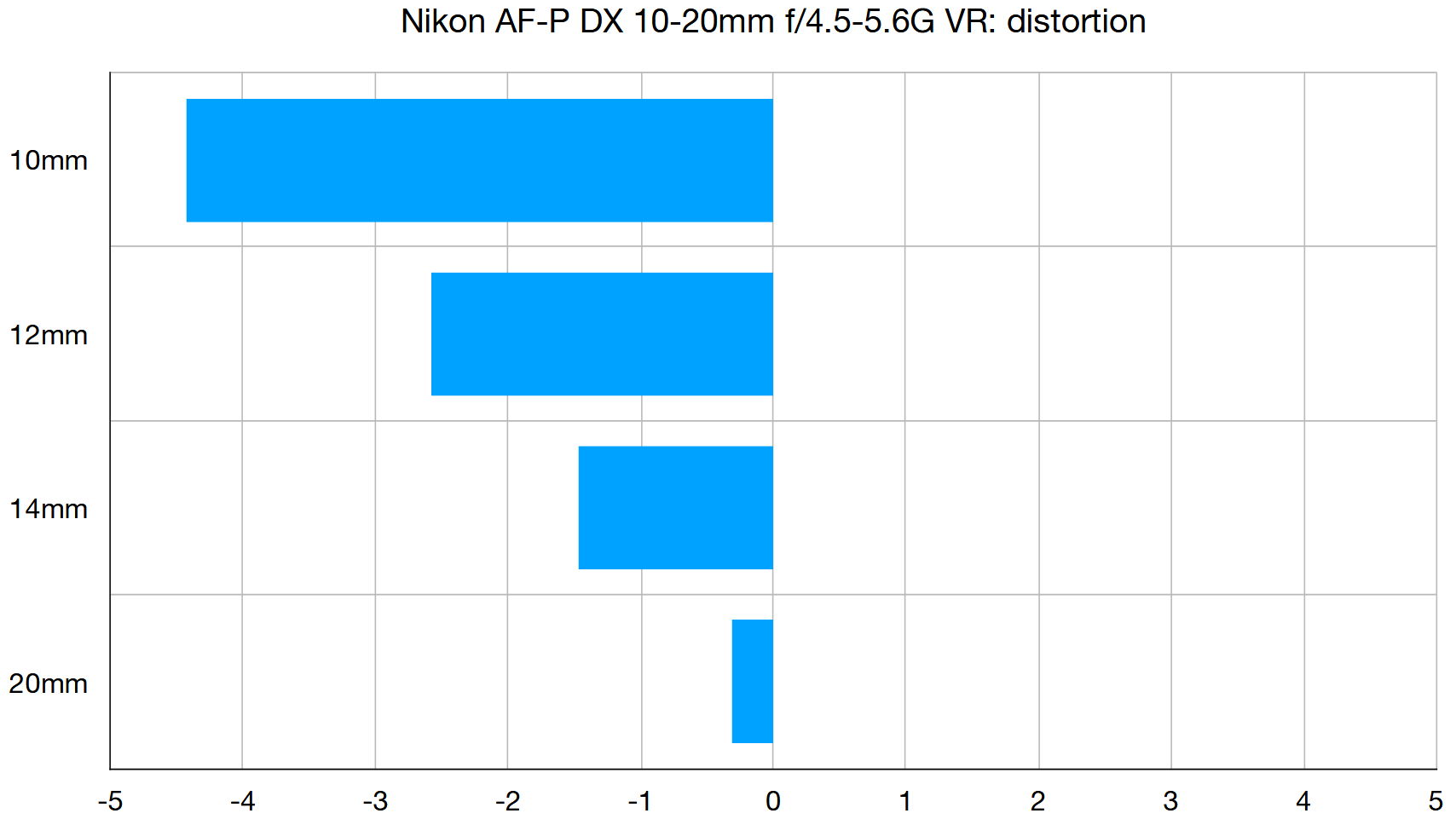
Barrel distortion is severe at the shortest focal length but decreases as you stretch through the zoom range, becoming quite minimal at the long end.
Verdict
You often have to pay big bucks for own-brand Nikkor lenses but this wide-angle zoom for DX (APS-C) format cameras packs a big field of view into a compact, lightweight construction at a very attractive price. Optical image stabilization adds to the attraction, image quality is good on the whole and the stepping motor autofocus system is highly effective, although this makes the lens incompatible with some older Nikon DSLRs.
Read more:
• Best camera lenses to get
• Best Canon lenses
• Best Nikon lenses
• Best Sony lenses
Matthew Richards is a photographer and journalist who has spent years using and reviewing all manner of photo gear. He is Digital Camera World's principal lens reviewer – and has tested more primes and zooms than most people have had hot dinners!
His expertise with equipment doesn’t end there, though. He is also an encyclopedia when it comes to all manner of cameras, camera holsters and bags, flashguns, tripods and heads, printers, papers and inks, and just about anything imaging-related.
In an earlier life he was a broadcast engineer at the BBC, as well as a former editor of PC Guide.
